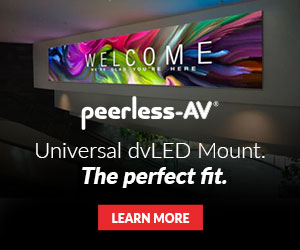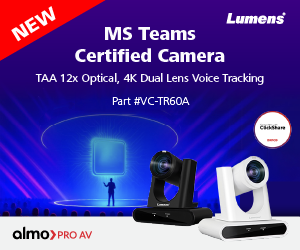E4 Experience Blog #2: Expansive Services Offering
Rob Voorhees explores Exertis Almo services and how they benefit integrators, as well as his passion for diversity, equity and inclusion.
During this month’s E4 Experience, Commercial Integrator had a chance to learn more about Exertis Almo’s services offering. We could have no better guide than Rob Voorhees, CTS, CTP, CTNS, DSCE, business development manager with Exertis Almo. After all, apart from overseeing the HARMAN vendor relationship, Voorhees manages the connectivity portion of Exertis Almo’s audiovisual services. During an expansive half-hour discussion with CI, Voorhees touches on Exertis Almo’s recent acquisition of Caddrillion Engineering & Drafting, LLC, as well as how the market-enablement company commits itself to lowering integrators’ barrier to entry for moving into services.
Entry into Exertis Almo Services
Voorhees starts the conversation with reflections on his arrival at Almo more than six years ago. Services were, in fact, his entry point into the organization, and he describes his initial impressions as pleasantly surprising. “At a lot of distributors and integrators, the term ‘one-stop shop’ gets thrown around very, very loosely,” Voorhees acknowledges. “One of the comments I made very early on in my career here,” he recalls, “was this: ‘This worldwide distributor really talks the talk and walks the walk.’”
In particular, Almo’s service mission — Voorhees summarized it as expanding integrators’ reach without increasing their overhead — impressed him. “It’s all about you knowing that you can fulfill a project or customer need without having to hire somebody new…without having to train somebody and dedicate those resources,” he adds.
When industry observers look at today’s Exertis Almo, they see a market-enablement company whose services portfolio is remarkably broad. Indeed, the organization’s offerings range from design and blueprinting all the way to DSP programming.
Voorhees, however, calls back to the foundational three Exertis Almo service offerings: labor, content creation and connectivity. Over time, the company presciently expanded on that foundation, with Exertis Almo responding, in real time, to emerging customer needs and partners’ desire to fulfill them.
Stepping into the Connectivity Arena
Right now, for example, the organization is leaning into its already-available cybersecurity services. As it is, Voorhees observes, some integrators are reluctant even to step into the connectivity arena because they are unfamiliar with the intricacies of bandwidth, streaming, etc. “Cybersecurity takes that to a multiplier of 10,” he notes. “It’s an even more difficult conversation.” But that’s precisely why integrators would want Exertis Almo as a service partner and consultative advisor.
As noted, Voorhees leads the connectivity portion of Exertis Almo services, and he shares some insights into it. “Our connectivity services allow us to partner and provide services from all the major ISPs in the country,” he explains. Indeed, Voorhees cites Comcast and AT&T as just two examples. Laying out an opportunity for recurring commission, he continues, “We allow our partners to provide those services to customers.”
One might think that dealing with ISPs falls outside integration businesses’ scope, but that would be wrong. After all, having sufficient network bandwidth is the single biggest key to a successful AV-over-IP deployment. “That’s why Exertis Almo got involved in something like connectivity services,” Voorhees states. “Because we saw where the industry was going.”
Caddrillion Acquisition Boosts Exertis Almo Services
In response to CI inquiring about Exertis Almo’s acquisition of Caddrillion, Voorhees explains that the organizations, in fact, had partnered for a couple years. Specifically, Caddrillion was a trusted resource for Exertis Almo with respect to systems design and engineering services. With expertise spanning systems design, systems engineering, project blueprinting, systems programming (e.g., AMX, BSS, Crestron, Extron) and remote programming, Caddrillion quickly proved a valuable partner for the market-enablement company.
“Over the time of building the partnership with them, [we determined] it might make sense for both parties to bring this in house,” Voorhees relates. The acquisition went into effect this past January 1.
It was a smart move for Exertis Almo, as it bolstered its services offering in the most impactful way. “AV design services have been a huge need just over the last year alone,” Voorhees declares. “That’s why [we’ve filled] that void in house now.” Moreover, he heaps praise on Caddrillion CEO Justin Gregory and his team, underlining once again their strength in engineering, drafting and programming. “They have just done a phenomenal job for our customers,” Voorhees enthuses.
Filling the Gaps
It’s clear that, in building its services offering, Exertis Almo is committed to filling the gaps in AV projects. Equally, however, the organization seeks to lower integrators’ barrier to entry so they can seize on service-oriented business opportunities. Voorhees remarks that today’s commercial AV industry is all about selling an experience. “And I consider [selling] services a big piece of that,” he declares.
But Voorhees remains mindful that not everyone natively “speaks the language” of services, nor are services everyone’s core competency. “[That’s why] any call or one-on-one meeting that I have with a partner to discuss ISP services — or anything else, for that matter — it’s all about going in to make it not as attractive as possible, but, instead, as simple as possible,” he stresses.
And Exertis Almo’s guidance frequently produces revelatory moments for partners. For example, Voorhees cites integrator conversations pertaining to his role with Exertis Almo’s connectivity services. He recalls integrators attesting that they frequently recommended internet-service suppliers but otherwise were uninvolved. However, when integrators learn about facilitating connectivity services through Exertis Almo and earning a commission, he says, “It’s like you’re reintroducing the wheel to them.”
This education about available opportunities frequently takes place during what Voorhees refers to as “discovery calls.” These conversations with integrator partners — as well as, sometimes, with end users — are incredibly useful for teasing out customer needs and elucidating the reasoning behind recommendations. “[It’s] not just about signing somebody up for something,” he declares, expressing a business integrity that is refreshing.
Embracing DEI
As passionate as Voorhees is about Exertis Almo services and serving partners well, he has equal passion for DEI. Part of it stems from having a teenage daughter on the autism spectrum. He states firmly that he wants to ensure his daughter never faces any barriers to entry as she pursues her dreams.
“Awareness and education are key,” Voorhees opines, crediting Exertis Almo as an organization that’s truly enlightened on diversity issues. “Getting to work for a company that addresses not just neurodiversity but also diversity and inclusion of all kinds is very comforting not only as an employee of that company but also as a parent,” he says. Although too modest to describe himself as a leader, Voorhees is an expositor of the message; he’s an active member of the AVIXA Diversity Council.
“It’s very, very powerful to feel comfortable and be happy as yourself,” Voorhees declares. Thus, it’s incumbent on AV industry organizations to proactively discuss and address these issues — not sweep them under the rug — and recognize that even small accommodations (e.g., noise-canceling headphones) can be transformative in empowering team members to deliver their very best. “More attention to little details is the key,” he advises.
Clearly, Exertis Almo pays attention to all the details of both its services and its inclusive company culture. And with powerful voices like Voorhees’ helping show the way, the market-enablement company’s future looks brighter than ever.
Connect with Commercial Integrator and Exertis Almo on LinkedIn.

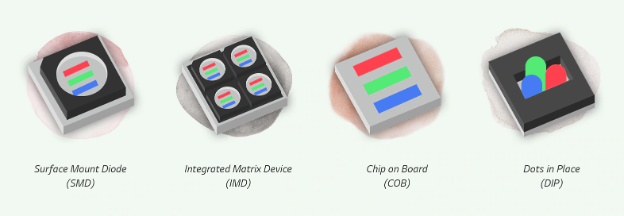
 The cabinet is the square or rectangular chassis that houses the electronics and provides structure to the wall. Each panel (modules + cabinet) is like a big, expensive Lego. The cabinet is the base-plate and the modules are the bricks. They can be linked together to form any size or shape. Just add your imagination and some modern video scaling technology.
The cabinet is the square or rectangular chassis that houses the electronics and provides structure to the wall. Each panel (modules + cabinet) is like a big, expensive Lego. The cabinet is the base-plate and the modules are the bricks. They can be linked together to form any size or shape. Just add your imagination and some modern video scaling technology.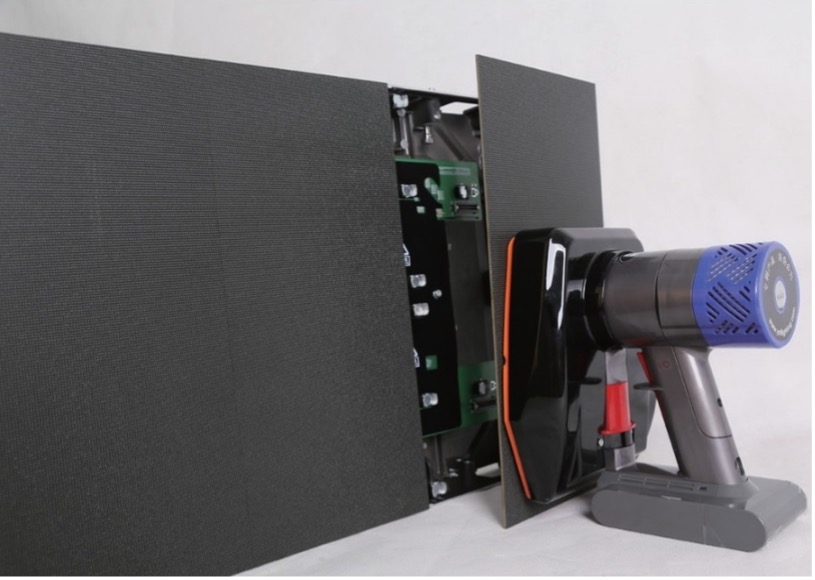
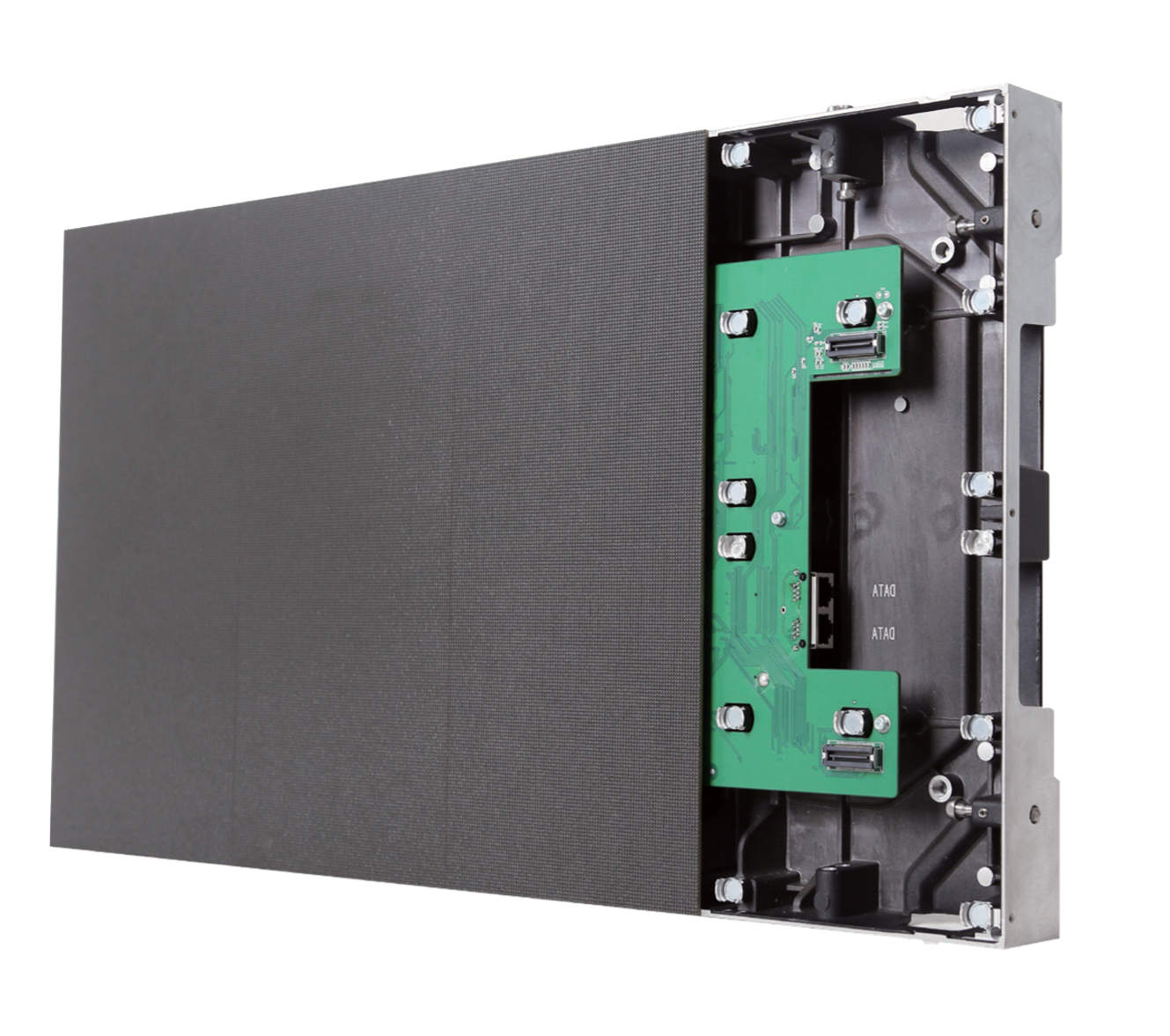

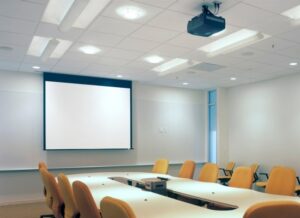 An important reminder is to make sure that you convert feet to inches (or vice versa) when doing your calculations. I’m commonly ask to recommend a screen for 125” wide screen that’s being mounted 15’ away. It would not look great for me to recommend a 1875:1 lens here – which is what you get if you don’t convert 15 feet into 180 inches. More commonly, I get requests such as, “I want to use XYZ projector, I have 164-inch diagonal screen and am mounting this 15ft away: which lens do I need?” I don’t know the width, but I do know the diagonal, so I can either ask for the width to be exact, or I can head over to this tool:
An important reminder is to make sure that you convert feet to inches (or vice versa) when doing your calculations. I’m commonly ask to recommend a screen for 125” wide screen that’s being mounted 15’ away. It would not look great for me to recommend a 1875:1 lens here – which is what you get if you don’t convert 15 feet into 180 inches. More commonly, I get requests such as, “I want to use XYZ projector, I have 164-inch diagonal screen and am mounting this 15ft away: which lens do I need?” I don’t know the width, but I do know the diagonal, so I can either ask for the width to be exact, or I can head over to this tool: 

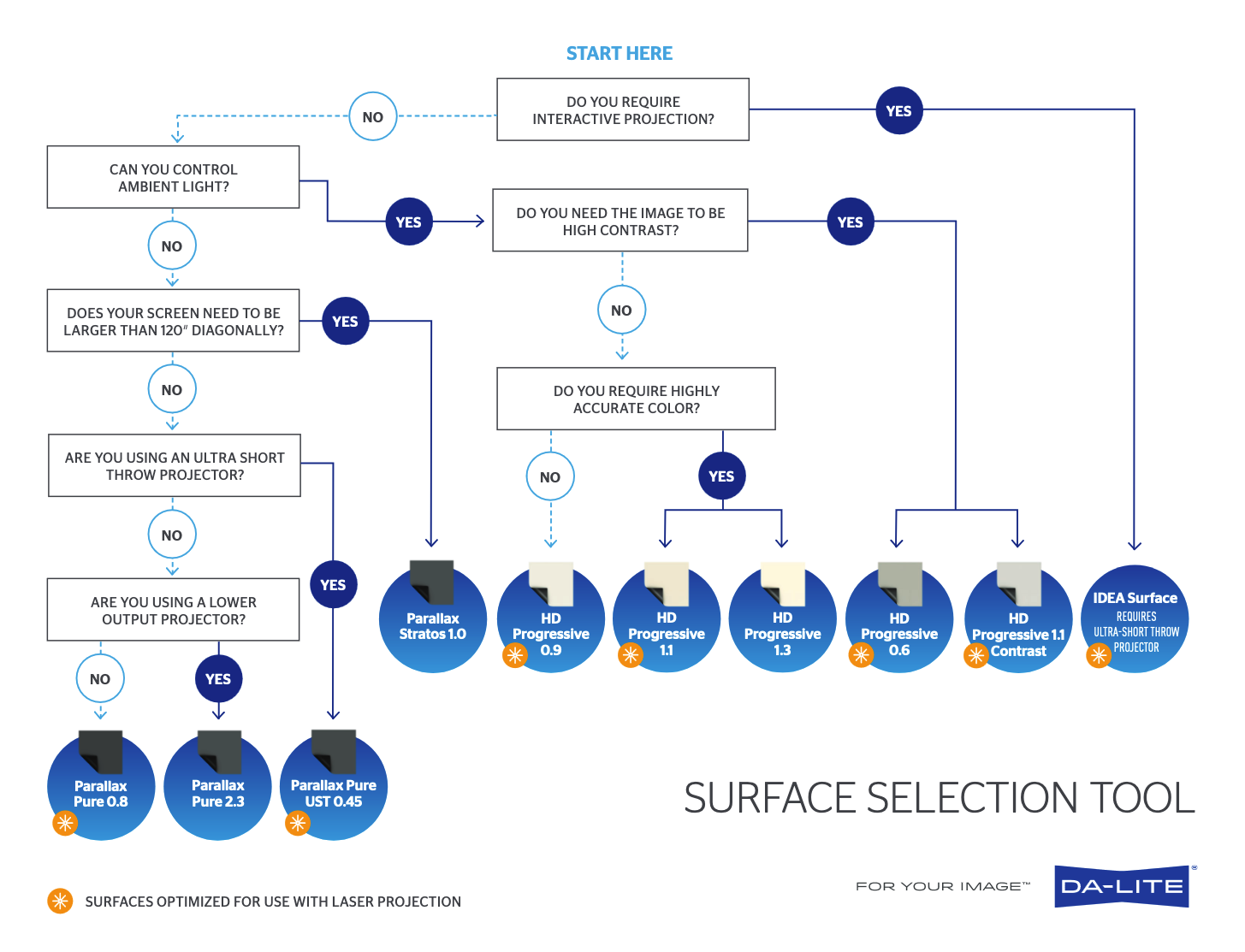
 Recently, CI chatted with Sam Taylor and Dan Smith about market-enablement company Exertis Almo’s meticulously planned leadership transition. Smith is succeeding outgoing executive vice president and COO Taylor, who is retiring following a remarkably successful 14-year tenure. Both leaders attended the
Recently, CI chatted with Sam Taylor and Dan Smith about market-enablement company Exertis Almo’s meticulously planned leadership transition. Smith is succeeding outgoing executive vice president and COO Taylor, who is retiring following a remarkably successful 14-year tenure. Both leaders attended the  An audio-visual design begins with information. Architectural drawings, dimensions, pictures, and expected room layouts are always needed to assess the room you’re working with. Photos and finish schedules in the architectural drawings will list the materials used in the room (ceiling, walls, floors, furnishings) and that will help reveal if there may be acoustical or installation challenges. However, you can only “guess” some possible aspects of the room. Realistically, nothing beats a proper site visit for assessing the environment. The firm responsible for integration will need to visit the site to document and/or confirm certain assumptions that may have been made about the suitability of the space. Site visits require measurement (not just the physical measurements of L x W x H, but also background noise level and ambient light measurements) and getting your head above the drop tile ceiling to determine clearances and obstacles. If the site visit exposes some issues that hinder the effectiveness of an audiovisual system, recommending changes such as motorized shades or blinds, acoustical treatments, changes to the lighting, raising the drop tile ceiling at the front of the room, etc., may be required.
An audio-visual design begins with information. Architectural drawings, dimensions, pictures, and expected room layouts are always needed to assess the room you’re working with. Photos and finish schedules in the architectural drawings will list the materials used in the room (ceiling, walls, floors, furnishings) and that will help reveal if there may be acoustical or installation challenges. However, you can only “guess” some possible aspects of the room. Realistically, nothing beats a proper site visit for assessing the environment. The firm responsible for integration will need to visit the site to document and/or confirm certain assumptions that may have been made about the suitability of the space. Site visits require measurement (not just the physical measurements of L x W x H, but also background noise level and ambient light measurements) and getting your head above the drop tile ceiling to determine clearances and obstacles. If the site visit exposes some issues that hinder the effectiveness of an audiovisual system, recommending changes such as motorized shades or blinds, acoustical treatments, changes to the lighting, raising the drop tile ceiling at the front of the room, etc., may be required. Want to know more?
Want to know more?
 Practice #4: Get out of your comfort zone
Practice #4: Get out of your comfort zone

